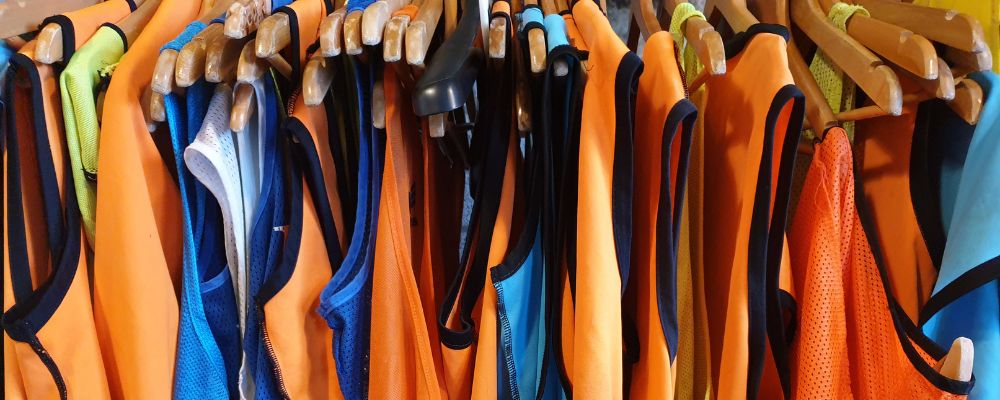In the workplace, high-visibility safety vests play a crucial role in ensuring the visibility and protection of workers across various industries. From construction sites to roadside operations, these garments serve as the first line of defense against hazards, making it imperative to choose the right hi-vis vest tailored to the specific needs of each industry. This comprehensive guide will navigate you through the complexities of selecting the most appropriate high-visibility safety vest, fostering a safer and more productive workplace.
Understanding ANSI Standards
The ANSI/ISEA 107-2020 Standard for High-Visibility Safety Apparel (HVSA) is the foundation for selecting appropriate safety vests. This standard establishes performance requirements for materials used in HVSA, specifying minimum amounts of background, retroreflective, and combined-performance materials. It also dictates colors and material placement on garments to enhance worker visibility and safety.

HVSA is categorized into three performance classes based on the amount of visible materials and design attributes:
Class 1: Basic Visibility for Low-Risk Environments
Ideal for places where workers are separated from traffic or vehicle speeds do not exceed 25 mph, such as parking lot attendants, warehouse workers, and shopping cart retrievers. These vests offer a basic level of visibility, suitable for low-risk environments.
Class 2: Enhanced Visibility for Higher Risk Environments
Designed for workers near roadways with traffic exceeding 25 mph or in inclement weather conditions. This class offers more coverage and visibility than Class 1, benefiting railway workers, school crossing guards, parking and toll gate personnel, airport ground crews, and law enforcement directing traffic. The increased visibility is crucial for these higher-risk environments.
Class 3: Maximum Visibility for Very High-Risk Environments
Offers the highest level of visibility for workers in environments with traffic exceeding 50 mph. These garments provide visibility through reflective material on the torso, arms, and legs, ensuring the workers are visible from all angles and in all light conditions. Typical workers include roadway construction workers, utility workers, emergency responders, and anyone working in high-speed traffic or poor visibility conditions. Class 3 vests are essential for these extremely hazardous environments.
Color Considerations
The selection of appropriate colors for safety vests helps workers to be easily seen and distinguished in various operational settings. The ANSI/ISEA 107 standards specify requirements for colors and reflective qualities. Here are some common color choices and the applications:
Fluorescent Yellow-Green: Most common in manufacturing due to high visibility and contrast against industrial backgrounds. Also ideal for construction sites, particularly in urban environments with many dark colors like blacks, grays, and browns.
Fluorescent Orange: Preferred for road construction work due to excellent visibility against roadways and the ability to signal caution effectively. It's a popular choice for road crews and highway maintenance workers.

Fluorescent Red: Highly effective for low-visibility situations like snowstorms or night work, designed to draw attention quickly when visibility is severely reduced. This color is often used by emergency responders and workers in extreme weather conditions.
Fabric and Feature Selection
The choice of material for a safety vest is fundamental, impacting the vest’s longevity and its comfort and efficacy under various working conditions.
Mesh vs. Solid Polyester Fabric: Mesh polyester is preferred for breathability and lightweight properties in warmer climates or strenuous activities, allowing air to circulate and reducing heat buildup. On the other hand, solid polyester provides better protection against wind and cooler temperatures, suitable for colder climates or less active roles.

Heavy-Duty Vests: 300D Oxford and Cordura fabrics offer extra durability and protection for rugged work environments. The 300D Oxford fabric is waterproof and windproof, making it an excellent choice for outdoor workers exposed to harsh weather conditions. Cordura, known for its resistance to abrasions, tears, and scuffs, is ideal for physically demanding jobs like construction or mining.
Fire-resistant and electrical-resistant fabrics: Some fabrics can protect against work-related fire or electrical hazards. For example, welders and those working near open flames or electrical sources should choose fire-resistant work vests made from materials like Nomex or Kevlar to protect against burns and electric shocks.
Design and Functionality
The functionality of a safety vest is largely determined by its design, which should cater to the practical demands of the job.
Functional Pockets: Multiple pockets are crucial for workers who need to carry tools and devices, ensuring that these essentials are easily accessible.
Zipper and Velcro Closures: Zipper and Velcro closures offer a balance between secure fastening and quick access.
Additionally Features: Using two-tone reflective tapes or vests with black bottoms can improve visibility while minimizing the appearance of dirt and wear. This helps maintain the vest’s effectiveness and aesthetic appeal over time.

Comfort and Fit
The functionality of a safety vest is greatly influenced by its fit, which must promote ease of movement while preventing potential hazards related to loose clothing.
Adjustability and Sizing: It is essential that safety vests offer adjustability to accommodate varying body sizes and the layers of clothing that might be worn underneath. Features such as adjustable straps and side closures help ensure a snug yet comfortable fit, allowing for a full range of motion. Vests are typically available in a range of sizes, from small to extra-large, to suit a diverse workforce.
Ergonomic Features: Some advanced vests incorporate ergonomic design elements like padded shoulders, which help distribute the weight of carried equipment more evenly, reducing strain and increasing comfort. Additionally, features such as integrated ventilation or breathable panels are crucial in maintaining comfort during physically demanding tasks or in warm climates, helping to keep the wearer cool and focused.
Specialized Designs for Women: Recognizing the different body shapes between men and women, it is important that safety vests are also designed with women in mind. Women-specific vests are crafted to fit the female form more accurately, featuring shorter lengths and tapered waists, and adjustments at strategic points such as the waist and hips. This not only enhances comfort but also ensures that the vests do not compromise safety by fitting improperly.

Customization Options
Customizing high-visibility safety vests enhances worker visibility and serves as a powerful branding tool. Businesses can incorporate company logos, names, or designs onto vests, shirts, and jackets through professional embroidery, vinyl heat transfer, or screen printing. This customization improves staff morale, conveys professionalism, and reinforces a commitment to safety and accident prevention.
For instance, a construction company can have its logo and name embroidered on high-visibility safety vests, ensuring their workers are easily identifiable on job sites. Similarly, a utility company can use customized vests to distinguish their employees from other workers, promoting brand recognition and enhancing safety.
Conclusion
Ultimately, by carefully considering factors such as material, visibility, color, fit, and customization options, safety managers and workers can choose the right safety vests. By carefully considering these factors, you can ensure that you are protected, visible, and prepared for the demands of your job, thereby reducing the risk of accidents and enhancing overall workplace safety.
Frequently Asked Questions (FAQs)
What does the ANSI/ISEA 107-2020 Standard for High-Visibility Safety Apparel (HVSA) entail?
The ANSI/ISEA 107-2020 Standard sets the performance requirements for high-visibility safety apparel, specifying the minimum amounts of background, retroreflective, and combined-performance materials. It also outlines the colors and placement of these materials to enhance worker visibility and safety. The standard categorizes HVSA into three performance classes based on the amount of visible material and design attributes and identifies garment types based on expected use settings and work activities.
Why is the choice between mesh and solid polyester fabric important for high-visibility clothing?
The mesh and solid polyester have distinct properties that affect comfort and functionality:
Mesh Polyester: Offers breathability and is ideal for warmer climates or active work, allowing air circulation to reduce heat buildup.
Solid Polyester: Provides better protection against wind and cooler temperatures, suitable for colder climates or less active roles.
How can customization enhance the effectiveness of high-visibility safety clothing?
Customization enhances the effectiveness of high-visibility safety clothing by incorporating company logos, names, or specific designs, which can improve staff morale, convey professionalism, and reinforce a commitment to safety. Services like professional embroidery, vinyl heat transfer, and screen printing allow for this customization, offering a personal touch while maintaining safety features.




